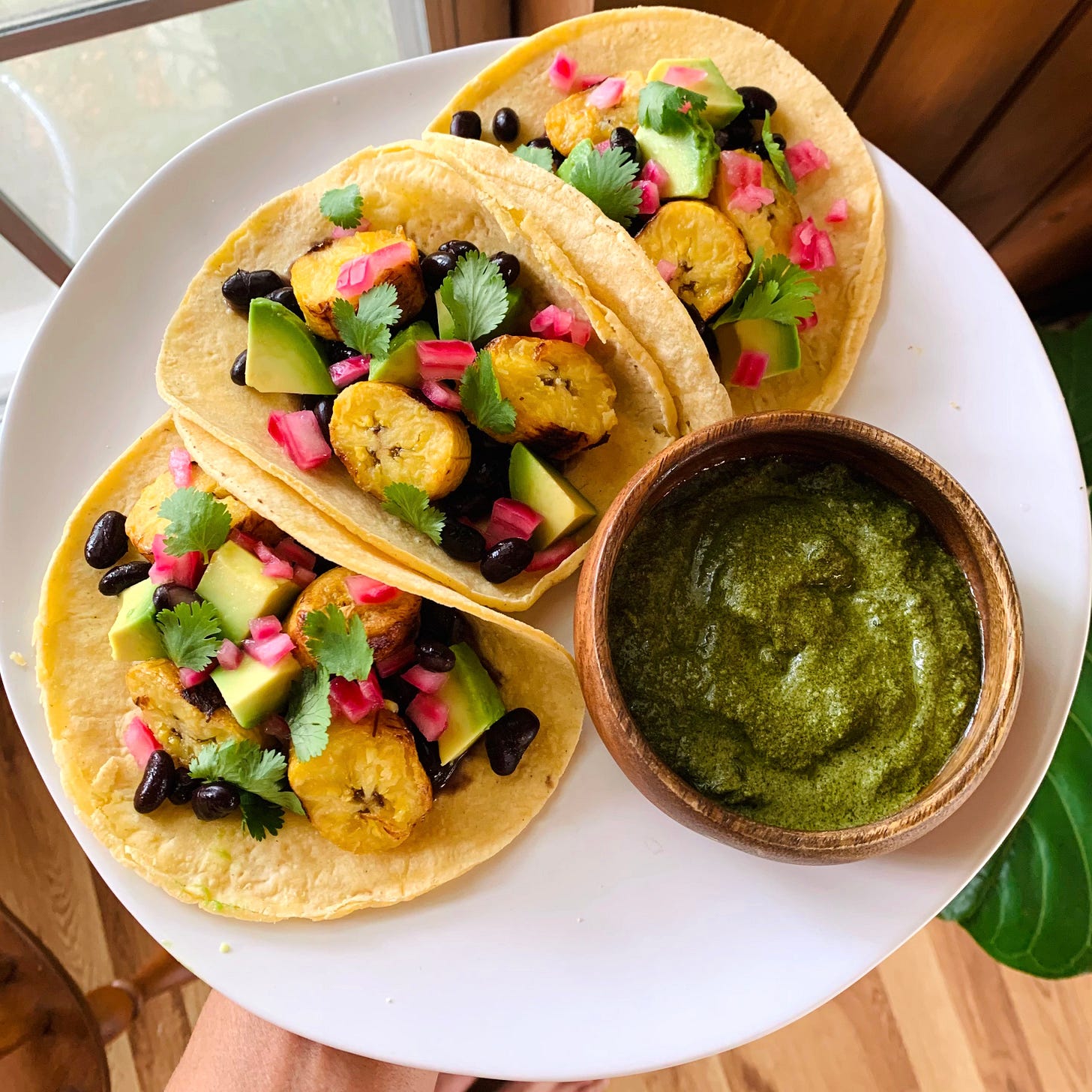How to stock a sustainable pantry
Stick this shopping list to your fridge
It’s easy to jump to conclusions about what it means to eat sustainably, but perhaps the biggest assumption is that loving the Earth means you have to go vegan. Sure, eating totally plant-based may be the best planet-conscious diet, but it’s not exactly realistic for everyone. Taking small steps that we can stick to—like replacing a portion of meat with plants—can make a huge difference.
If you’re new to lower-impact eating, the first step is building a versatile pantry. Stocking the right staples—including an array of protein sources and some flavor superstars—will help you confidently cook quick, balanced, and craveable meals any time of day. That’s what we’re doing this week.
One key to satisfaction is blending the familiar with the unfamiliar, says
, food writer and author of the new book No Meat Required, which chronicles the history of plant-based eating in the United States. Take beans: They’re cheap, filling, full of protein, and everywhere; but don’t you dare call them basic.If you’re low on snacks, you can blitz some garbanzos or limas into a quick dip. No dinner? Throw some in pasta, smush them on toast, or reach for the tortillas. “I’ll make black bean tacos by just simmering black beans with some olive oil, tomato paste, and spices,” Kennedy says.

Accepting the bean is no big deal, but working unfamiliar ingredients into your rotation can feel intimidating. It doesn’t have to be. People around the world have been cooking up easy meat-free dishes for centuries. “Embracing simplicity and not trying to do too much is the best way to start with new ingredients,” Kennedy says. Take tempeh: The firm, crumbly, soy-based protein originated in Indonesia in the 1600s, and it can play the part of ground meat in many of your favorite recipes.
Beyond that, even the purest carnivore can find mealtime inspiration from time-tested preparations. “See where the ingredients are used in cuisines from around the world, and figure out how these fit into your tastes,” says Kennedy. Tempe manis, for instance, is a traditional dish where tempeh gets fried crispy and tossed in a sweet-sticky soy glaze.
This mix-and-match advice helped guide us as we built our ideal sustainable pantry. It blends grocery go-tos with less familiar gems to create a wealth of delicious possibilities.
The ultimate sustainable pantry shopping list
Seasonal fresh produce is the champ of Earth-happy eating, but the pantry is where the meal-makers live. Aside from the rice and pasta you probably already have, many plant-forward recipes revolve around a core set of easy-to-find ingredients. Fill your cupboard, fridge, and freezer with these other staples (plus a few wild-card flavor heroes), and you’ll have all the building blocks you need for countless meals.

